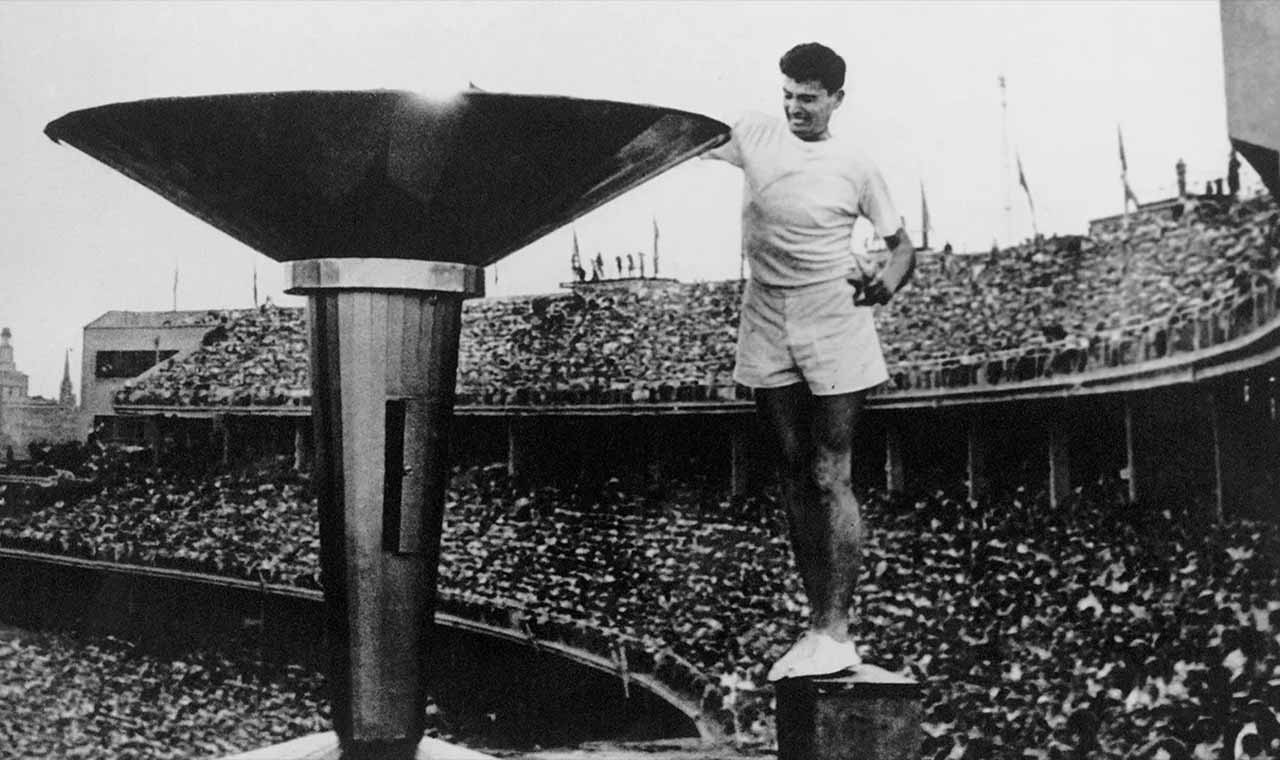Timing is everything when it comes to the Olympics. In 1956, stopwatches were the key technology used to capture split-second performances at the Melbourne Olympics Games and ratify 23 world records.
As Australia hosted its first Summer Olympics, the reliability of meticulous timekeepers with hand-held stopwatches ensured precise scoring that stood the test of time. This is the story of how stopwatches cemented key moments in Olympics history at Melbourne 1956.

Melbourne Secures the 1956 Olympics
In 1949, the International Olympics Committee named Melbourne, Australia as the surprise host for the 1956 Summer Games. Melbourne beat out frontrunners Buenos Aires, Los Angeles, Detroit, and Mexico City.
This represented Australia’s first Olympics hosting opportunity. The choice reflected Australia’s long sporting tradition as home to cricketers like Don Bradman and track stars like Marjorie Jackson. The timing aligned with Melbourne’s centennial celebrations.
The Melbourne Olympics were also the first to be held in the Southern Hemisphere. And Australia became one of the smallest nations at the time to host the prestigious event.
With under six years to prepare, Melbourne diligently constructed world-class facilities including a 100,000 person Olympic Stadium, aquatic center, velodrome, and athlete village. The city was ready to welcome over 3,000 athletes from 67 nations.
The Stopwatches: A Key Timing Innovation
Amazingly, electronic timing technology did not exist yet in 1956. Instead, a specialized Australian-made stopwatch was chosen as the official timekeeping instrument.
The three-handed stopwatch was custom-produced by Melbourne watchmaker Eduard Heuer and dubbed the Seikosha Type SWC. It had a bold white dial with elapsed seconds, minutes, and hours tracked by distinct hands.
The stopwatch stood out for its red aircraft control grip handle attached by a cord. This innovation gave timekeepers superior handling ability to precisely start, stop, and reset the watch even while following sprinters around the track.
Type SWC stopwatches were used by designated timekeepers in all sports requiring accurate scoring and records: athletics, cycling, equestrian, modern pentathlon, rowing, and swimming. Up to three timekeepers handled the stopwatches at each event for redundancy.
With Australian athletes primed to shine on home turf, these stopwatches were ready to capture history-making performances for the host nation.
World Records Set at Melbourne 1956
The team of Australian timekeepers armed with the custom stopwatches had their work cut out for them with multiple world records set at the Melbourne Games. Their impeccable hand timing secured these moments in the history books.
In swimming, famed Australian Dawn Fraser won gold in the 100m freestyle shattering the world record at 58.9 seconds. The stopwatch handlers began timing as soon as they saw the splash indicating the start. Staying focused during the furious 59-second sprint, they stopped the watches precisely as Fraser touched the wall ahead of rivals.
American men also demolished the 4x200m freestyle relay record aided by the officials’ quick reactions starting the stopwatches at first contact. The US team finished a staggering 8 seconds under the old world best mark – a remarkable margin requiring accurate timing.
On the track, the legendary Soviet runner Vladimir Kuts smashed the 5,000 and 10,000 meter records convincingly. Timekeepers had to maintain split concentration through nearly 30 total minutes of world-record effort by Kuts. Their endurance matched the athletes.
In total, 23 new world records were set across all sports at the Melbourne Games. Each moment came down to dedicated timekeepers flawlessly handling the Type SWC stopwatches when the records were on the line. Their results formed the authoritative scoring backbone of an Olympics for the ages.
Dawn Fraser Wins Gold for Australia
While many records fell, the moment most special for Australia featured Dawn Fraser powering to 100m freestyle gold. Fraser entered the event as defending champion and clear favorite, but faced strong competition from American Sylvia Ruuska.
When the starting pistol fired, Fraser propelled herself from the blocks and took a quick early lead she would never relinquish. Stroking furiously down the pool, Fraser touched the wall first in world record time that left no doubt.
As Fraser emerged from the pool realizing she defended gold, a deafening roar erupted from the home crowd. The Australian timekeepers triumphantly stopped their watches, recording the new benchmark. Fraser became the first Olympian to win the event three straight times thanks to their flawless timing.
Fraser’s record-smashing Olympic victory emerging from the Melbourne pool remains one of Australia’s most treasured sports moments. The continuing celebrations affirmed swimming as Australia’s top sport.
Stopwatches’ Lasting Olympic Legacy
The hand-held stopwatches specially engineered for precise timing played a pivotal role at the 1956 Melbourne Olympics. The devices enabled accurate scoring of events down to 1/10th of a second, cementing new world records and gold medal performances.
Yet by the next Summer Games in Rome 1960, electronic timing technology began replacing traditional hand stopwatches. Automatic timing using cameras and line sensors increased accuracy and removed human error.
But the trusty stopwatch did not disappear. Until today, they remain a crucial backup timing method at the Olympics. When races come down to razor-thin margins or records hang in the balance, hand stopwatches confirm digital systems function properly.
The 1956 Melbourne Games represented the pinnacle of the classic hand-held stopwatch’s Olympic timing career. The iconic red-handled Type SWC watches freeze-framed Australia’s first home Olympics in golden moments forever measured to the split second.
